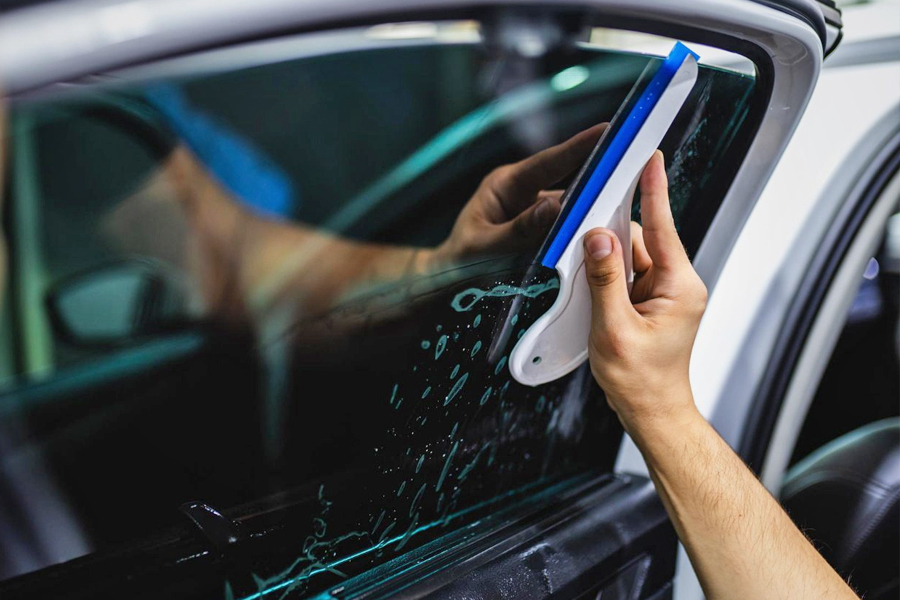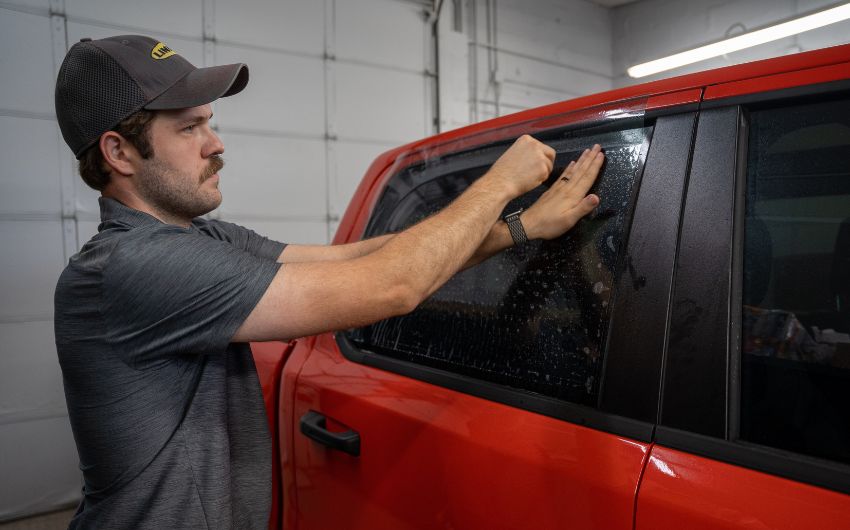Automobile Window Tinting: Tips for Maintaining a Professional Complete
Automobile Window Tinting: Tips for Maintaining a Professional Complete
Blog Article
Home Window Tinting Laws and Standards: What You Need to Know Before Tinting Your Vehicle
Prior to proceeding with window tinting for your lorry, it is essential to familiarize yourself with the varied laws and standards that regulate this practice throughout different states. These guidelines determine the permissible degrees of color darkness, frequently determined by noticeable light transmission (VLT) portions, and include details specifications for front windshields intended at ensuring road safety and security.
Overview of Home Window Tinting Regulations
Home window tinting regulations are frequently subject to variation across different territories, showing local laws and safety factors to consider. These laws dictate the acceptable degrees of tint darkness and reflectiveness on automobile windows, ensuring that chauffeurs preserve ample exposure while additionally protecting against hazardous UV rays and warm.
Most regulations identify home window tinting based on the Visible Light Transmission (VLT) percentage, which indicates the quantity of light that can travel through the window. Usually, reduced VLT portions symbolize darker tints. Regulations usually set apart in between the front, side, and rear windows, with stricter limitations applied to the front windshield to boost safety and security for both the chauffeur and various other road customers.
Additionally, some jurisdictions impose restrictions on the reflectivity of the color, avoiding too much glow that can hinder visibility. Exemptions to these laws may exist for people with certain medical conditions calling for extra sun protection. Compliance with window tinting regulations is important, as violations can cause penalties, obligatory elimination of the tint, and possible increases in insurance policy costs. Therefore, it is important for car proprietors to acquaint themselves with neighborhood regulations prior to waging home window tinting setups.
State-by-State Color Laws
Recognizing the specific window tinting policies in each state is crucial for automobile owners seeking to follow the law. Each state in the united state has developed its own set of rules controling window tinting, which can vary considerably. These policies commonly dictate the permitted levels of tint darkness, the kinds of windows that can be tinted, and any type of medical exceptions that might use.
As an example, states like The golden state have stringent constraints on color darkness for front home windows, while others, such as New Mexico, may permit darker tints. Additionally, specific states mandate details exposure percents for different home windows, consisting of the windscreen, front side home windows, and back windows. It is crucial for automobile proprietors to acquaint themselves with their state's laws to stay clear of prospective penalties or penalties.
In addition, some states may need a qualification sticker to be put on colored windows, showing conformity with state regulations. Failure to comply with these guidelines not just takes the chance of lawful effects however can also affect safety and visibility while driving. For that reason, automobile proprietors ought to conduct detailed study or get in touch with regional authorities to guarantee full understanding and compliance with state-by-state color policies.
Allowed Color Degrees and Types
Lots of lorry owners may be stunned to discover that allowed tint degrees and kinds differ widely throughout various states. Each state has established its own laws concerning the allowable darkness use this link and reflectivity of window tint, commonly determined by Visible Light Transmission (VLT) portions. VLT describes the quantity of light that can go through the colored home windows; thus, a reduced percent suggests a darker color.

In addition, the kinds of tint materials permitted can differ, with some states restricting metallic or mirror-like finishes. It is important for vehicle proprietors to familiarize themselves with their state's particular legislations to make certain conformity. Non-compliance can lead to fines, mandatory removal of the color, or various other lawful consequences, making it critical to understand these laws before proceeding with installation.
Medical Exceptions for Tinting
While not all states offer allocations for clinical exemptions regarding home window tinting, those that do recognize the necessity for specific individuals to boost presence and comfort because of medical conditions. Various medical conditions, such as lupus, skin cancer, and particular eye conditions, can render people especially delicate to sunlight. As a result, these individuals may require darker colors to secure themselves from unsafe UV discover this rays and glow.

It is very important to note that despite having a clinical exception, there might still be restrictions on the degree of tint permitted. Conformity with state regulations makes certain that individuals are both protected and within legal limitations. Those considering clinical exceptions should contact their neighborhood Department of Electric motor Autos or comparable authority to comprehend the needs and treatments essential to obtain an exception properly.
Fines for Non-Compliance
Failing to adhere to window tinting regulations can lead to considerable penalties, which vary by state. Regulation enforcement companies are empowered to issue citations for automobiles that do not stick to the defined tinting laws. These charges usually consist of fines, which can vary from modest quantities to a number of hundred bucks, depending on the extent of the offense and the state in inquiry.
In some territories, duplicated offenses may result in intensifying penalties or added fines, such as obligatory court appearances. In addition, non-compliance might require the removal of prohibited tinting, frequently at the owner's expenditure. In extreme cases, habitual wrongdoers might encounter suspension of their lorry enrollment till conformity is attained.
Furthermore, insurance implications might emerge from receiving multiple citations for home window tint violations. Insurance providers might view such infractions as a sign of riskier habits, potentially resulting in raised costs or trouble in insurance coverage.
To avoid these penalties, it is vital for lorry owners to familiarize themselves with their helpful site neighborhood window tinting laws and ensure that their lorry complies (Window Tinting). This proactive approach not just stays clear of legal implications however additionally promotes road safety and security
Conclusion

The majority of policies categorize home window tinting based on the Visible Light Transmission (VLT) portion, which indicates the amount of light that can pass with the home window. Conformity with window tinting regulations is important, as offenses can result in fines, required removal of the tint, and prospective boosts in insurance costs.Recognizing the certain home window tinting laws in each state is essential for car owners looking for to abide with the law. These laws typically determine the allowable levels of color darkness, the kinds of windows that can be tinted, and any type of clinical exceptions that may use.
For circumstances, states like California have rigorous limitations on tint darkness for front windows, while others, such as New Mexico, may allow darker colors.
Report this page